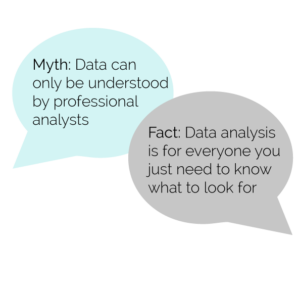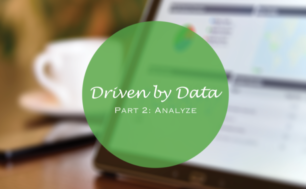Driven by Data: Analyze
We continue our Driven by Data series with analyzing the salient features of our research, and then next week implementing new strategies to generate more successful and efficient practices. That’s a big challenge so let’s get started!
 If you’re utilizing Google Analytics like we’ve suggested, you’ll want to cozy up to the reporting page of this platform as this is where you’ll be spending the majority of your time. There are four main categories of reporting that Google Analytics provides, including: Audience Reports, Acquisition Reports, Behavior Reports, and Conversion Reports. Within these four categories you’ll find several more specific types of reports but to clarify what these reports generally contain, we’re going to define each category, first.
If you’re utilizing Google Analytics like we’ve suggested, you’ll want to cozy up to the reporting page of this platform as this is where you’ll be spending the majority of your time. There are four main categories of reporting that Google Analytics provides, including: Audience Reports, Acquisition Reports, Behavior Reports, and Conversion Reports. Within these four categories you’ll find several more specific types of reports but to clarify what these reports generally contain, we’re going to define each category, first.
Audience Reports will include all of your data concerning who is coming to your website.
Acquisition Reports will include data concerning where your audiences are coming from.
Behavior Reports will include data concerning what your audience is doing on your website. Conversion Reports will include data concerning how your audience decided to make a decision, or rather what led them to a conversion.
An important aspect to the reports you’ll be analyzing are sources, which we’ve defined previously as the origin of your website traffic. Your sources tell a story about your audience, since their origin often plays a significant role in what they do once they reach your website.
- Example: Visitors who reach your website from an organic search or directly entered it into their address bar are more likely to spend more time on your website and visit pages other than your homepage, whereas visitors who come to your website through social media or by a referral page might have a shorter session (time spent on your website) and not venture past your homepage.
We can asses from this general rule of thumb that visitors who already know you and are looking for you will be more interested in the content of your website than those who might’ve stumbled upon your page by referral or social media. Of course, this guideline does not mean that visitors who access your website from social media or other referral pages are not valuable or will not produce quality leads or conversions, as we strongly recommend promoting your business where appropriate, as it can be extremely beneficial.
Dimensions are also a valuable aspect of your Google Analytics reporting as they identify the characteristics of the users or sessions your reports contain, for example, location and device type are two types of dimensions. You’ll want to customize your dimensions so that you’re always looking at the most relevant data to your business. Google Analytics allows you to even save these dimensions in a labeled segment for quick access.
- Example: If you own several dealerships located in South Texas, the most relevant dimension for you to scale your data by would be this region. Looking at data across the United States will give you a much different picture of your website visitors, and even looking at the great state of Texas might not be the best picture as your dealerships reside in a very particular region and Texas is such a large state.
The Behavior Flow section of Behavior Reports is another valuable tool within Google Analytics that can help you map your visitors’ path within your website, so that you can see which pages they click through to and from where else on the website. The flow of your customers’ web searching is very telling of their motives and their likelihood of purchase.
Before implementing the results of your data it is best to step back and consider what you’re looking to get out of your data? These questions will help you identify what steps to take next. We’ll get into the sort of questions you should be asking in our next post on implementation, so stay tuned!
Have some questions? We’re sure you do, this was a ton of information! Contact us at marketing@commercialwebservices.com. We’d love to walk you through the analytics process further.


